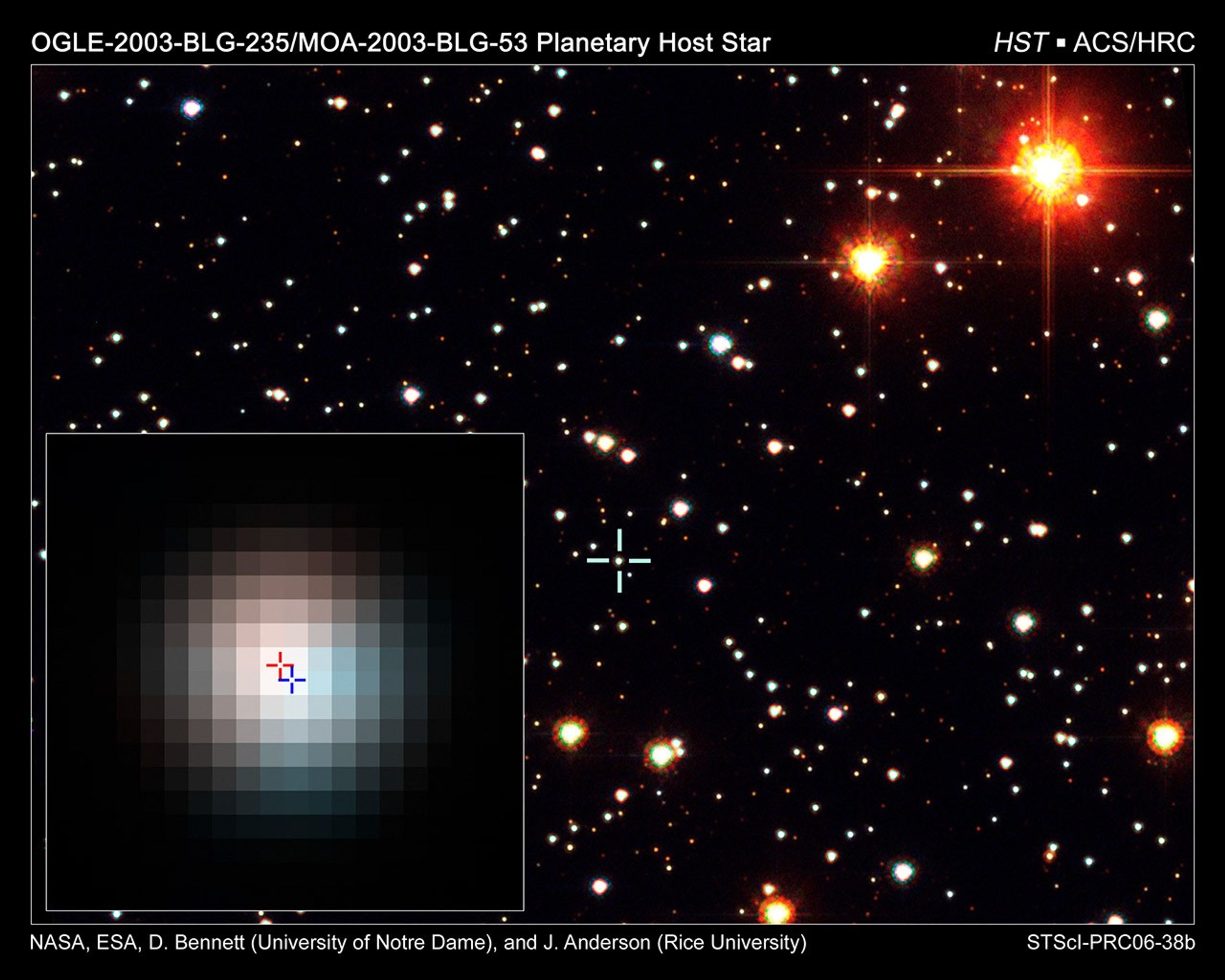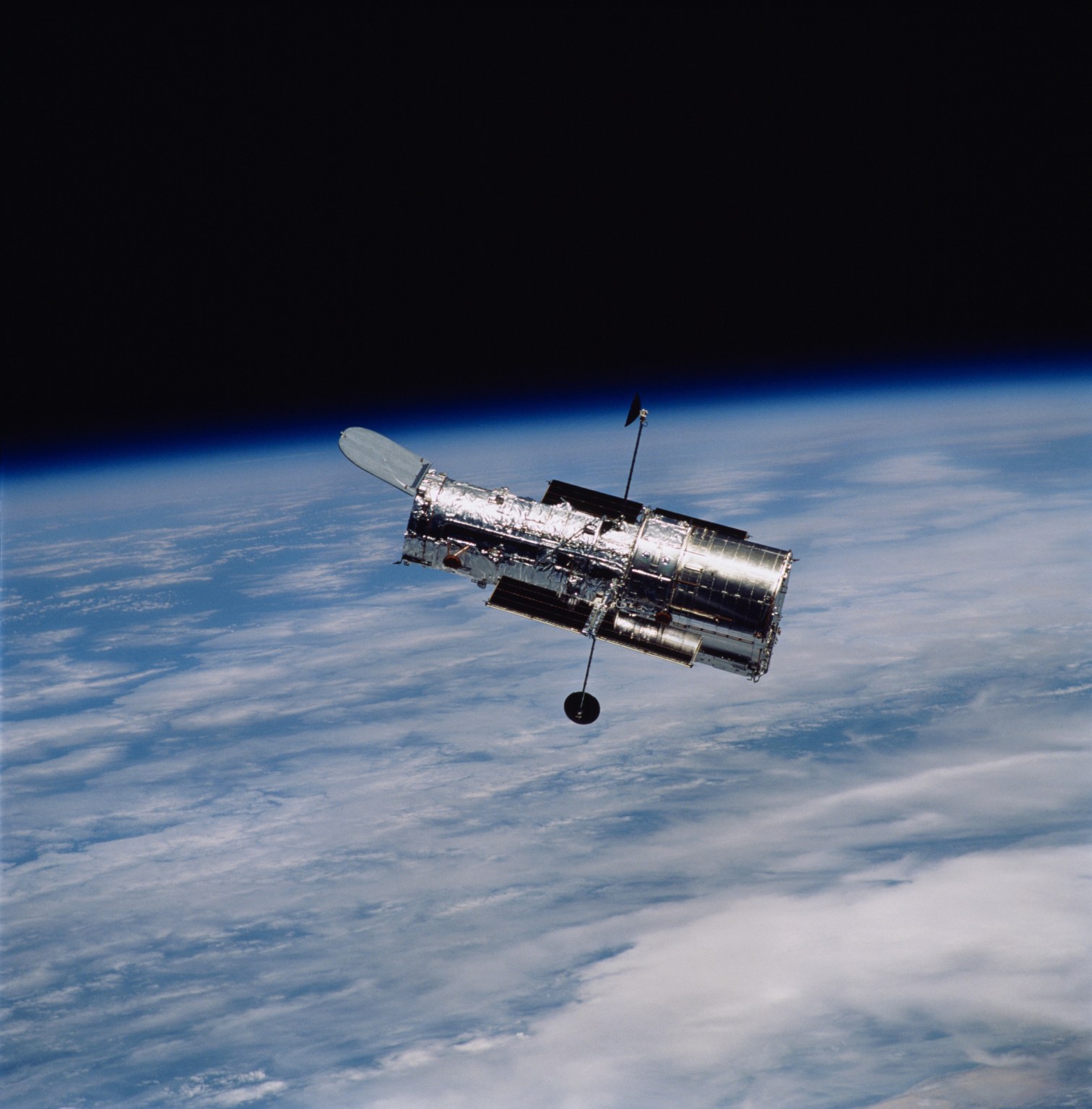1 min read
Identification of Exoplanet Host Star

[bottom left text] Hubble Space telescope observed and identified the host star to a gravitationally lensed planet first discovered in 2003 by ground-based telescopes.
[left box] A foreground red star and planet drifts toward the sky position of a much farther sunlike background star.
[middle-boxes] In 2003, the foreground star-planet system slightly amplifies the light of a background star that momentarily aligns with it. This is called a microlensing event.
[right box] The light from each star is progressively more offset year after year as the foreground star drifts by.
[bottom right box] In 2005, Hubble Space Telescope observations distinguished the light from the two stars. This was possible because the foreground star turns out to be a different color from the background star. By observing the stars though a red and blue filter, astronomers were able to enhance the visibility of the offset. The relative offset is 0.7 milliarcseconds (the angular width of a dime seen 3,000 miles away) from the source star. (This is below Hubble's resolution, but still a measurable effect.) The deduced positions of the two stars in 2005 are shown with red and blue crosshatches.
- Release DateAugust 8, 2006
- Science ReleaseHubble Identifies Stellar Companion to Distant Planet
- Credit
Related Images & Videos

Artist's View of Planet Around a Red Dwarf
This is an artist's concept of a gas giant planet orbiting a red dwarf K star (system name OGLE-2003-BLG-235L/MOA-2003-BLG-53L). The planet has not been directly imaged, but its presence was detected in 2003 microlensing observations of a field star in our galaxy. Gravitational...

Identification of Exoplanet Host Star
This is a Hubble Space Telescope view of a small region of our galaxy where the host star to a gravitationally lensed planet (catalogued as OGLE-2003-BLG-235L/MOA-2003-BLG-53L) is located. The star is identified by the crosshatch at frame center. The planet was first identified...
Share
Details
Claire Andreoli
NASA’s Goddard Space Flight Center
Greenbelt, Maryland
claire.andreoli@nasa.gov
































